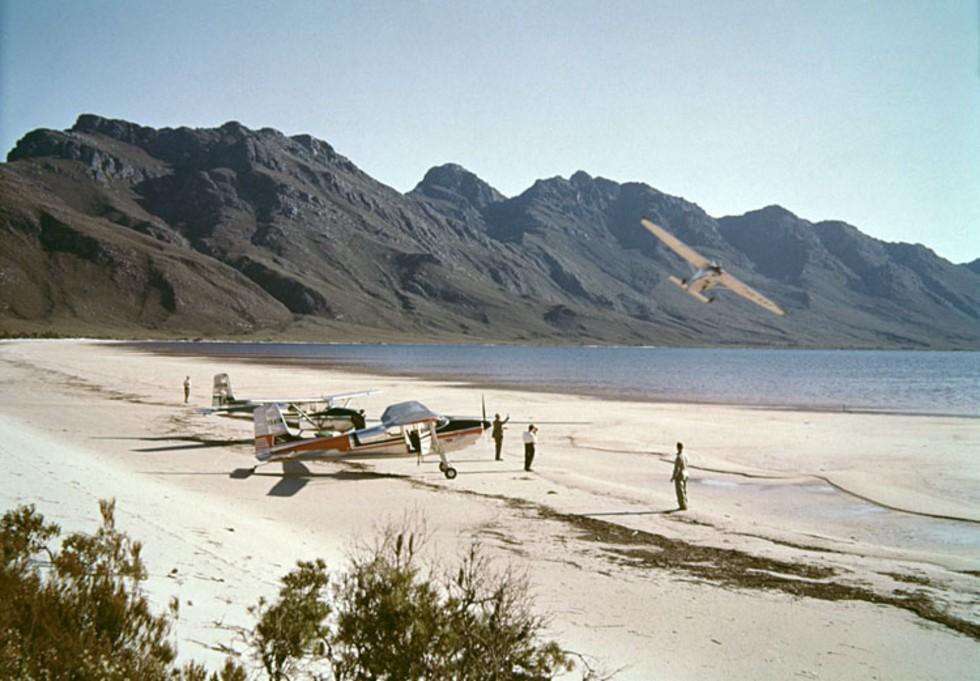


About this record
This colour photograph shows the beach at Lake Pedder in south-western Tasmania in 1963. In the foreground, two single-engine light planes and several people are on the pink quartzite beach. A third plane appears to have just taken off. In the background is the rugged Frankland Range.
Educational value
- This photograph shows the great natural beauty of the original Lake Pedder, before it was flooded as part of the Upper Gordon River Hydro-electricity Scheme in 1972. The lake was the focal point of the Lake Pedder National Park, which was to become part of Tasmania's World Heritage area. It has been the subject of a conservation debate that has continued to the present day.
- The original Lake Pedder and its distinctive pink quartzite beach were formed about a million years ago when outwash from a glacier blocked the Serpentine River. The original lake covered about 9 square kilometres. The quartzite beach was about 3 kilometres long, almost 1 kilometre wide and 300 metres above sea level. Its bright pink sand, marked by large ripples in summer, contrasted with the rugged surrounding mountains and greatly enhanced the heritage value of the lake.
- The first light plane landed at Lake Pedder in 1946 and, until 1972, light aircraft flew small groups of tourists on charter flights directly to the beach. The area was isolated and difficult to access, and for many years was known only to these tourist groups and to bushwalkers. Tourists and walkers who had visited the lake began the movement to preserve its natural features for the future by mounting an environmental campaign to inform the general public.
- Despite nationwide protests from conservationists wanting to preserve Lake Pedder's beauty and unique ecosystem, the Tasmanian government allowed the lake to be flooded in 1972. Three dams were built to store the flows of the Serpentine and Huon Rivers. Although the campaign was apparently a failure, it was a major factor in stimulating concern about the environment and promoting the Australian conservation movement that later saved the Franklin River area from destruction.
- Debate continues as to whether Lake Pedder should be restored to its original form, shown in the photograph, by removing the dams. In 1995, a federal parliamentary committee stated that either restoring or maintaining the lake would have great symbolic meaning but would require further investigations into the costs and benefits involved. They concluded that the proposal did not have the priority or official support necessary for the commitment of federal government resources.
Acknowledgments
Learning resource text © Education Services Australia Limited and the National Archives of Australia 2010.
Related themes
Need help with your research?
Learn how to interpret primary sources, use our collection and more.



